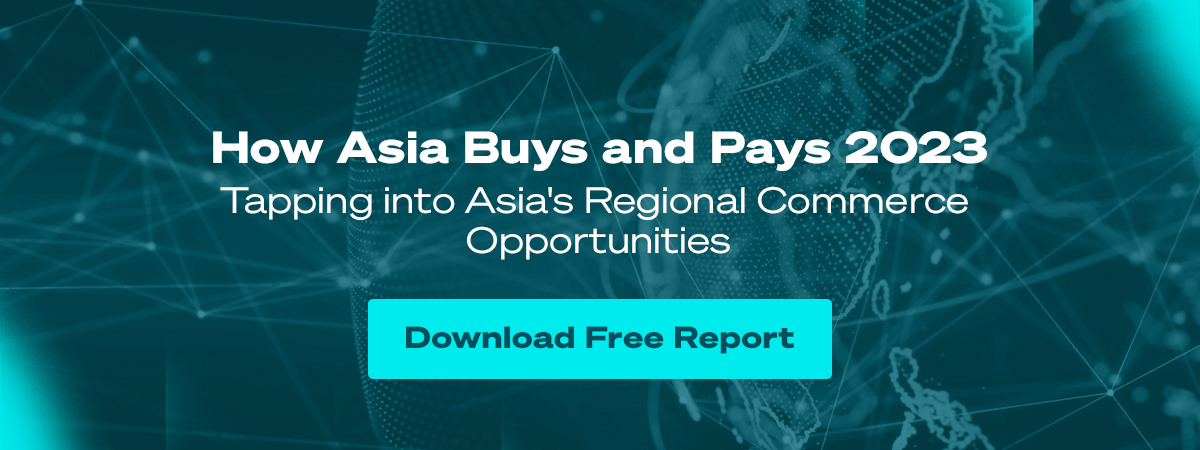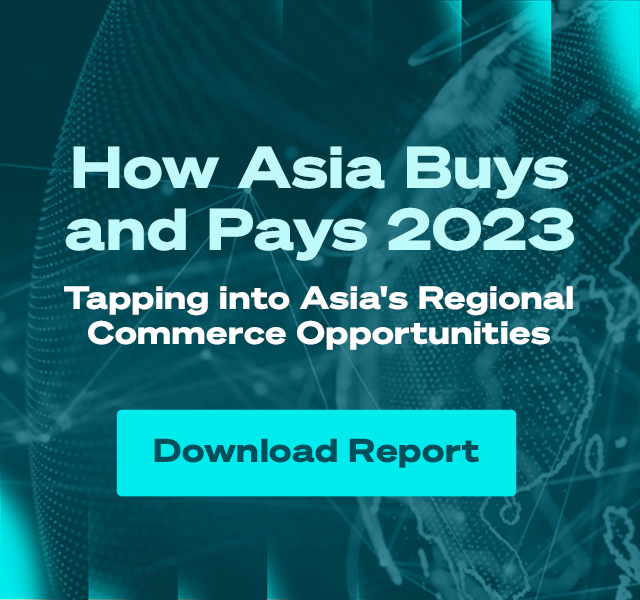
Payments Powerhouses: Supporting the Philippines' Digital Payments Transformation
Dan Wolbert, Visa’s Country Manager for the Philippines and Guam, has had a keen interest in digital payments throughout his career. Before assuming his current leadership role, Dan worked in the local fintech space and prior to that was with Visa’s corporate strategy team at their global headquarters in San Francisco.
Hello, Dan! Tell us about your journey into fintech and banking and why you moved from the US to the Philippines.
Dan: Certainly! So I’m a Filipino-American born and raised in the US. I began my career on the credit card front doing consulting work. I also spent some time with Visa’s corporate strategy team in San Francisco for a few years.
I met my beautiful wife in grad school, and when we decided to get married, we chose to move to the Philippines. I explored a couple of options in the fintech space before I decided to rejoin Visa in 2015.
What are the prevalent payment trends in the Philippines?
During my move to the Philippines, the digitalisation of payments was already ongoing, with new capabilities such as InstaPay and seamless account-to-account and peer-to-peer payments already emerging and now in play.
The COVID-19 pandemic accelerated the digitalisation of payments further. Now we’re seeing a lot of new trends happening, with technologies like cryptocurrency taking root and gaining prominence.
On the subject of cryptocurrency, tell us more about its development in the Philippines.
Cryptocurrency has been around for many years. I think the first crypto fintechs started appearing ten years ago. At the start, crypto was very experimental, with players simply trying to figure out its role and how it would work.
Over the years, crypto has become much more entrenched in the broader fintech industry - whether it’s crypto or ledger technology. For Visa specifically, we’re looking at the traditional buying and selling of crypto, crypto rewards systems, and the enablement of payments via stablecoins like the USD Coin (USDC).
There is certainly a high awareness and interest of crypto in the Philippines. Our recent Consumer Payment Attitude Study show that cryptocurrency is well-known in the market, with 2 out of 10 currently investing and the rest either familiar or aware.
In the long term, Visa will continue to grow credentials and acceptance while deepening engagement and enable innovation and scale for players across the ecosystem, from instalments to crypto to merchants.
The Philippines has increasingly turned away from its cash-heavy roots to embrace digital payments. Tell us more about this development.
As a nation, we are pretty open to digital payments - as I earlier mentioned, we were already on track well before COVID-19 hit. The pandemic only acted as an accelerant.
The Philippines presents a tremendous opportunity to expand digital payment acceptance relative to its neighbouring countries. Partners like 2C2P are quick on the uptake, setting up the systems and technologies necessary to drive digital payments across the country.
At present, digital payments in the Philippines have been mainly concentrated in the B2C segment. We’re looking to expand into the B2B sector, with a special focus on SMEs and governments.
With digital payments becoming so prevalent in the Philippines, how is Visa driving financial inclusion for the unbanked and underserved?
At Visa, we see tremendous opportunity in providing for the unbanked and underserved. The first step is to ensure ample opportunities for people to make payments via digital channels. This is where we have to focus on expanding acceptance for more merchant segments. We’re also partnering with institutions like the Bangko Sentral ng Pilipinas (BSP) – the central bank of the Philippines – to improve financial literacy countrywide.
With financial inclusion comes the enabling of new use cases such as virtual issuance, virtual cards, and other form factors. Our education initiatives cover all these areas to enable new customer segments on the digital payments front.
To better resonate with our audience, Visa released a series of Facebook shorts with clear messaging to cardholders on the importance of safety and security. For example, one of our shorts is centred around phishing and fraudulent links, where we walk our audience through the red flags.
In 2021, we partnered with renowned theatre group Tanghalang Pilipino to launch the “Lukot-lukot, Bilog-bilog” web series. This online campaign teaches financial literacy through the story of a teenager named Gwyneth, who learns how to properly manage her finances through the aid of her family and friends. Presented in a fun and tongue-in-cheek manner, this web series has resonated well with Filipinos across the country.
Which sectors or verticals are driving the new use cases you mentioned?
From what we’ve seen, ecommerce has taken hold and gained prominence in the last two years after having been the key driving force behind remote payments. Apart from ecommerce, other things that are traditionally cash-related, like remittances, have also undergone a shift towards peer-to-peer payments. SMEs - both formal and informal - have also started to turn to social media channels to sell their goods and services.
You mentioned that Visa is working with the BSP, which is pivotal to driving financial inclusion in the Philippines. Tell us more about how Visa has worked with the BSP to achieve this goal.
The BSP has been a fantastic partner in driving digital payments and financial inclusion in the Philippines! The central bank’s work dates back to the early 2000s when it pioneered the enablement of mobile wallets like GCash and Smart Money (now known as PayMaya).
At present, the BSP has established a digital payments roadmap, which aims to increase digital payment usage in the Philippines by 50%. This is a well-organised approach to driving digital payments in the Philippines, and I’m confident that we’ll be able to help the BSP achieve its goal.
What about the Philippine government?
From a regulatory standpoint, the government has also been a wonderful pillar of support. It is very active in industry engagement, having coordinated industry bodies for circulars and discussions to shape the growth of payments in the Philippines.
The government has also been very open to partnering with private and public entities which share the vision of advancing the Philippines’ digital payments landscape.
It’s great to see that there aren’t significant regulatory barriers to advancing digital payments in the Philippines. What about the public? Do they have any security concerns about digital payments?
It is essential to Visa that all stakeholders operating within our ecosystem feel safe. This means that we have to establish only the strongest foundation that ensures every transaction made via our products is secure.
When I say ‘stakeholders’, I don’t just mean board members and government bodies. I’m also referring to our consumers themselves - catering to their needs and protecting them from fraud are just as crucial for us.
In the Philippines, there is a strong emerging middle class. This translates into a generation of fresh grads who now have financial responsibilities such as drawing a salary and setting money aside for savings. These are essential skills that new grads may lack, and this is where education comes in as an important engine to impart them.
Compared to other Southeast Asian countries, where would you position the Philippines’ payment landscape?
I’d say the Philippines is doing well on its digital payment journey. This is compared to similar markets in the region, like Indonesia, Vietnam, and Cambodia. Across all these Visa markets, there’s a tremendous opportunity for cash conversions - to this end, account-to-account transfers and digital wallet-based payments are picking up.
Specific to the Philippines, contactless payments are a key area of focus for us. We’re seeing good momentum to date, but there’s still plenty of room to grow. This is especially in light of neighbouring countries like Singapore, where contactless payments have become normalised. The Philippines still has ways to go before we reach this point.
What are the most common digital payment methods used in the Philippines today?
We’re really excited about contactless payments. It’s possible to perform tap-to-pay payments at practically every business in the Philippines today. I’d say that contactless payments still haven’t become a habit yet - and that’s something we’re looking to change, whether it be through digital wallets or other digital payment methods.
With the travel industry picking up and SMBs requiring support, what is Visa doing to boost these sectors?
You hit the nail on the head with these two areas - these are where Visa is concentrating its attention at the moment. We’re working closely with our partners to enable travel-related acceptance - we’re targeting tourist hotspots like Boracay for a start.
SME and SMB spaces are our next key area of focus as they present ample opportunity for acceptance growth. So we’re looking at different form factors like tap-to-phone and rapid seller onboarding - where possible, we’re looking at a reduction in merchant onboarding time from two weeks to just one day.
On the innovation front, where is Visa investing?
There's plenty of room for virtual and digital issuance to grow in the Philippines, so Visa focuses its attention on this field. Specifically, we are putting together the building blocks necessary for future innovation.
At present, the merchant and consumer onboarding process can be much more efficient. That’s why we hope to improve the efficiency of this process with tools such as digital issuance and tokenisation.
With travel routes reopening, have you made any plans?
So I have a pretty large family with four kids. A regular car wouldn’t work, so I have a minivan to take my wife and kids down to the local beaches. Now that conditions are more favourable, I’d love to bring my family out of Metro Manila for a spell and visit the other locales in the Philippines!
. . .
Payments Powerhouses is a monthly editorial series interviewing the movers and shakers of the payments and wider fintech industry in Southeast Asia and beyond. If you’d like to be featured on Payments Powerhouses, reach out to us here.

